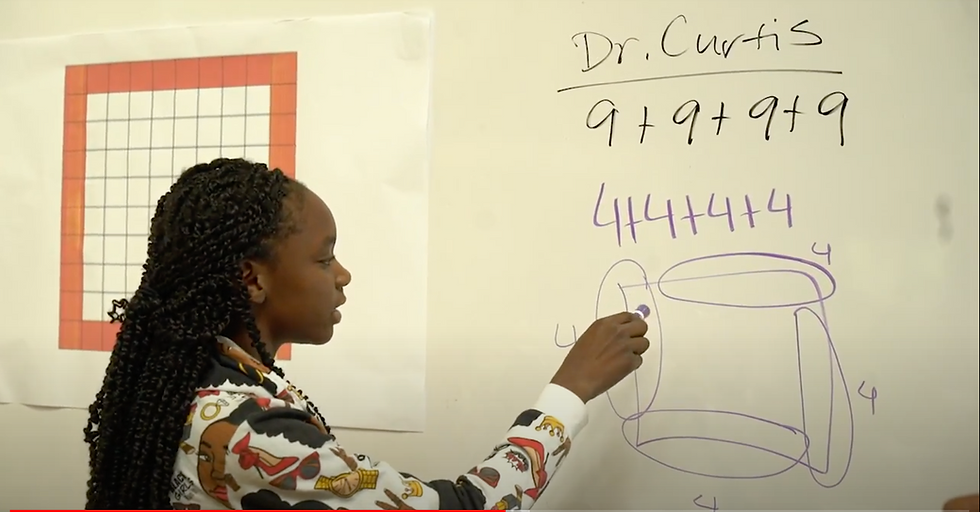Hopes & Dreams for Students
- Yay Math!
- Sep 26, 2019
- 3 min read
Updated: Jun 24, 2020
Determining Our Hopes & Dreams for Students

When our research team met for the first time to begin planning for their research lesson, they explored their hopes and dreams for their students. Recognizing that the students in their classrooms are whole people (not just a receptacle for information!) they adopted the following questions from a list shared by lesson study teams in San Francisco Unified.
What are your hopes for your students in terms of sense of purpose & sense of self?
What are your hopes for your students in terms of leadership, empathy & collaboration?
What are your hopes for your students in terms of content knowledge & skills?
After sharing their hopes for their students with each other, and acknowledging that every human is continuously learning and growing in these areas, the research team answered the following questions in relation to their students:
Where are your students currently? In terms of purpose & sense of self? In terms of leadership, empathy & collaboration? In terms of content knowledge and skills?
And, what strengths do they bring to the classroom? In terms of purpose & sense of self? In terms of leadership, empathy & collaboration? In terms of content knowledge and skills?
Perhaps not surprisingly, the answers the teachers shared for these questions were similar. It seems math teachers everywhere hope that their students like themselves and feel confident in their ability to learn new things, that they work well with others, and that they have a solid understanding of math concepts and robust problem solving skills they can transfer to new situations. It is also not surprising that the areas of growth teachers identify for their students align with these hopes.
The surprises come from the strengths, which are often as varied and dynamic as human beings themselves. I've heard teachers share how their students love to share their ideas – about everything, all the time. Or the class seems to already have a culture of empathy and caring for each other. Sometimes it’s that the class laughs together often, or that most students are already bi or trilingual, or that their students have an insatiable curiosity and ask the most interesting, and at times unexpected, questions. Acknowledging the strengths and skills students bring to the classroom grounded the research team in assets they could build on during their inquiry cycle.
After each team member wrote down their responses to the questions above, the team used the super-clever-and-possibly-scientifically-validated star method to narrow in on a possible research theme. It works like this: each person gets 2-3 stars (*) and can place them on any of the responses in the first two categories (hopes & areas of growth) that feel like the important areas to focus on for the research cycle. The areas with the most stars become the contenders to be the research area of focus. Some examples from our research team included:
Facilitating meaningful mathematical discourse that leads to conjectures
Supporting students in making connections across mathematical concepts
Building a classroom culture where students feel confident and safe to share their math ideas
These possible research themes became the starting point for generating a research question and theory of action to guide the design of the research lesson. The star system created a quick way to narrow in on a theme during the meeting. Teachers found the strategy helpful since everything often feels like the most important thing to work on, which can lead to analysis paralysis and little forward movement.
For educators looking to try lesson study in their own contexts, we found that:
Exploring hopes and dreams for students as a research team created a shared understanding of our communal goals and laid the groundwork for a shared sense of responsibility for our students
Making each team member’s ideas visible (stickies or a communal document) and using a system to help narrow in on an area of focus provided space for all voices to be heard and also moved the team forward on their research lesson journey.
Happy planning!
Previous: Laying the Groundwork for Lesson Study
Next week: Looking at Focus Student Work
Daisy Sharrock works at the Center for Research on Equity and Innovation at the High Tech High Graduate School of Education, and is part of a Student-Centered Learning Research Collaborative-sponsored research team that is currently engaged in the following study: Leveraging the Power of Improvement Networks to Spread Lesson Study. Read more about their current study here. We are grateful to JFF, KnowledgeWorks’, and the Student-Centered Learning Research Collaborative and its funders for their support. Learn more at sclresearchcollab.org




Comments